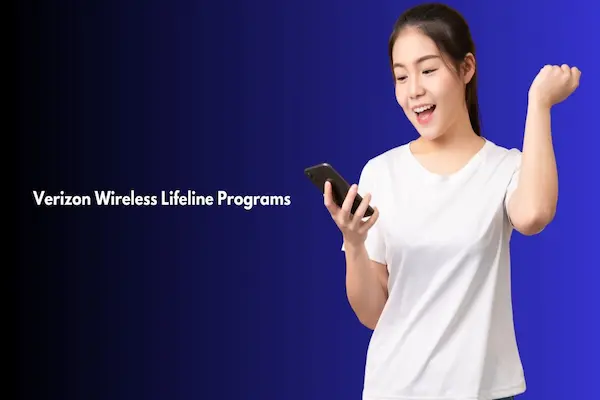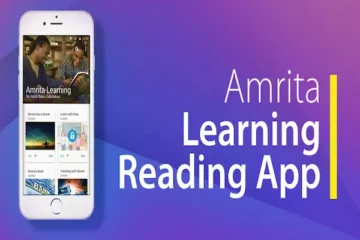Verizon Lifeline: Federal Low-Income Discount
Learn how to sign up for Verizon Lifeline and get up to $9.25 off your monthly phone or internet service.
Advertising
Verizon Lifeline: How to Apply for the Phone Assistance Program for Low-Income Families
Many low-income individuals struggle to afford essential phone and internet services. The Verizon Lifeline program offers a solution through significant monthly discounts for qualified customers.
Verizon Lifeline is a federal program that offers discounts of up to $9.25 per month on Verizon phone or internet services for low-income families. This benefit can be applied to residential landline services, Fios internet, or Verizon wireless plans.
The program operates as part of a broader government initiative to ensure everyone has access to basic communications. Only one Lifeline benefit is allowed per household, and applicants must meet specific eligibility criteria based on income or participation in other government assistance programs.
Key Points
- Verizon Lifeline offers monthly discounts of up to $9.25 on phone and internet services for qualified low-income families
- Applicants must meet specific eligibility criteria and only one benefit per household is allowed
- Applications can be submitted through the National Lifeline Verifier online or by phone
What is Verizon Lifeline?
Verizon Lifeline offers monthly discounts of at least $9.25 on phone and internet services for qualified low-income families. This federal program operates through the Federal Communications Commission to make essential services more affordable.
Lifeline Program Benefits
The Verizon Lifeline program offers significant discounts on essential communication services. Qualified customers receive at least $9.25 off per month on their bills.
For families living on tribal lands, the benefit increases to up to $34.25 monthly. This higher discount recognizes the specific needs of these communities.
The program covers both phone service and internet service. Customers can apply the discount to residential phone plans or Fios internet services.
Some states also offer discounts on wireless services. Iowa, New York, North Dakota, and Wisconsin have specific programs for cell phones.

How the Lifeline Discount Works
The Federal Communications Commission administers the Lifeline program at the national level. Customers must apply through the Lifeline National Verifier at the CheckLifeline.org website.
The application process can also be completed by phone. The Lifeline Support Center number is 800.234.9473 for direct assistance.
Each qualified household can receive only one Lifeline discount per month. The benefit cannot be split between multiple services or providers.
The discount appears directly on the monthly Verizon bill. Customers do not need to pay upfront and then receive reimbursement.
Difference Between Lifeline and Other Assistance Programs
The federal lifeline program differs from other government programs by focusing specifically on communications. While other programs cover food or housing, Lifeline ensures access to phone and internet.
The program is permanent, not temporary like some emergency assistance. Families can maintain the benefit as long as they remain qualified.
Unlike state programs, lifeline assistance operates nationally. All states participate, although some have additional specific rules.
Lifeline also combines with other federal benefits. Families receiving SNAP, Medicaid, or other assistance often automatically qualify for the program.
Eligibility Criteria for Verizon Lifeline
To qualify for the Verizon Lifeline program, applicants must meet specific criteria based on household income or participation in government programs. Only one discount per household is allowed, with special rules for residents on tribal lands.
Income-Based Eligibility
The most common qualification for Verizon Lifeline is based on household income. Applicants must have a household income equal to or below 135% of the Federal Poverty Guidelines.
These guidelines vary according to family size and state of residence. A family of four, for example, must have an annual income below approximately $39,000 to qualify.
Income considered includes all earnings from family members living at the same address. This encompasses salaries, government benefits, pensions, and other income sources.
Applicants must provide proof of income through documents such as pay stubs, tax returns, or government benefit letters. Income verification is mandatory during the application process.
Government Programs Accepted as Proof
Participants in specific federal programs automatically qualify for Lifeline. Medicaid is one of the most common programs accepted as proof of eligibility.
The Supplemental Nutrition Assistance Program (SNAP) also automatically qualifies beneficiaries. This program provides food assistance to low-income families across the country.
Supplemental Security Income (SSI) recipients are entitled to the Lifeline discount. This program serves elderly, blind, or disabled individuals with limited resources.
Federal Public Housing Assistance is another qualifying program. This includes housing vouchers and federally subsidized housing.
Veterans Pension based on need also qualifies for the program. Veterans receiving this benefit can enroll in Lifeline automatically.
Requirements for Tribal Lands Residents
Residents on tribal lands have additional qualification options for the Lifeline program. The Bureau of Indian Affairs General Assistance Program is accepted as proof of eligibility.
The Food Distribution Program on Indian Reservations (FDPIR) also automatically qualifies participants. This program replaces SNAP in many tribal areas.
Specific tribal programs may be accepted depending on federal recognition. Each tribe may have unique programs that serve as proof of eligibility.
Residents on tribal lands often have access to additional discounts beyond basic Lifeline. This can include free phones or internet services with larger discounts.
One Discount Per Household Rule
The Lifeline program allows only one discount per household, regardless of the number of eligible people living at the address. This rule prevents duplication of benefits in the same residence.
A household is defined as a group of people living together and sharing income and expenses. Families living at separate addresses can each receive the benefit.
If someone in the household already receives Lifeline, other family members cannot enroll separately. Violation of this rule can result in permanent loss of benefits.
Applicants must certify that no one else in their residence receives the Lifeline discount. This certification is mandatory during the application and annual renewal process.
Available Plans and Verizon Lifeline Coverage
The Verizon Lifeline program offers monthly discounts of at least $9.25 on landline, mobile, and residential internet services. The program primarily serves specific states and includes special benefits for tribal communities.
Landline and Mobile Phone Plan Options
Verizon offers Lifeline discounts on landline services through the Home Phone Connect plan. This service works with a special device that connects traditional phones to Verizon’s wireless network.
The Home Phone Connect Device allows local and domestic long-distance calls. The equipment does not require traditional phone cable installation.
For mobile service, Verizon does not provide free government phones. The company offers monthly discounts on existing plans for qualified customers.
Discounts apply to regular Verizon Wireless plans. Approved customers receive a fixed reduction on their monthly mobile service bill.
Residential Internet Plans and Fios Home Internet
The Verizon Lifeline program includes discounts on residential internet services. Qualified customers can receive benefits on Fios Home Internet where available.
Fios Home Internet offers high-speed fiber optic connection. The monthly discount applies directly to the service bill.
Customers can combine landline and internet discounts when eligible. The program is separate from the Affordable Connectivity Program (ACP).
Verizon processes applications through specific Lifeline forms. Each type of service requires independent eligibility verification.
Geographic Coverage of the Program
The Verizon Lifeline program operates in specific East Coast states. Coverage includes Connecticut, Delaware, Maryland, Massachusetts, New Jersey, New York, Pennsylvania, Rhode Island, and Virginia.
The program also serves the District of Columbia and North Carolina. Availability varies according to Verizon’s local infrastructure.
Customers must reside in coverage areas to qualify. The Home Phone Connect service has limited reach to Verizon’s wireless network.
Fios Home Internet is available only in regions with installed fiber optic infrastructure. Not all mobile coverage areas have Fios access.
Limitations and Benefits for Tribal Areas
Communities on tribal lands may have access to additional Lifeline benefits. The federal program offers larger discounts for qualified residents on tribal lands.
Verizon works with partner providers to expand coverage in tribal areas. Some remote regions may have signal or infrastructure limitations.
Qualified tribal beneficiaries can receive up to double discounts compared to standard benefits. Eligibility follows specific federal criteria for native communities.
Coverage on tribal lands depends on proximity to Verizon cell towers. Internet services may have reduced speeds in more isolated areas.
How to Apply for Verizon Lifeline
The Verizon Lifeline application process involves specific documentation and verification through the National Verifier. Applicants must provide proof of eligibility and await official approval.
Application Process and Documentation
The applicant must access the CheckLifeline.org website to initiate the Lifeline application. You can also call the Lifeline Support Center at 800.234.9473.
Required documentation includes proof of income or participation in eligible government programs. The applicant needs to present documents proving their identity and address.
Accepted documents include:
- Proof of income
- Government benefit card
- Photo identification document
- Utility bill
The application form must be completed in full. Incomplete information may delay approval.
Only one person per household can receive the Lifeline benefit. The applicant must confirm that no one in their home already receives the discount.
The Role of the National Verifier in Lifeline
The Lifeline National Verifier is responsible for reviewing and approving all program applications. This centralized system automatically verifies applicant eligibility.
The National Verifier cross-references provided information with government databases. This ensures that only qualified individuals receive the benefit.
The system checks if the applicant already has Lifeline at another location. It also confirms participation in eligible assistance programs.
Main functions of the National Verifier:
- Eligibility verification
- Duplicate prevention
- Document validation
- Final approval
After verification, the National Verifier sends approval directly to the eligible carrier. Verizon receives notification to activate the discount on the customer’s account.
Application Timeline and Follow-up
Processing time varies between 7 to 14 business days after complete submission. Incomplete documentation can significantly extend this timeline.
The applicant receives notification by email or mail about the application status. It’s important to regularly check your inbox and spam folder.
If approved, the discount appears on the next Verizon bill. The minimum benefit of $9.25 monthly is applied automatically.
Follow-up steps:
- Check confirmation email
- Wait for National Verifier communication
- Confirm discount on next bill
Denied applications include specific reasons in the notification. The applicant can appeal the decision by providing additional documentation within 60 days.
The beneficiary must report eligibility changes within 30 days. This includes income changes or change of address.
Other Providers Related to the Verizon Network
Many Lifeline providers use the Verizon network to offer free or discounted services. These include major companies like TracFone and SafeLink, as well as smaller carriers like TAG Mobile and Q Link Wireless.
TracFone and SafeLink Wireless
TracFone is one of the largest carriers offering Lifeline services using the Verizon network. The company has millions of customers in the United States.
SafeLink Wireless is a TracFone brand dedicated specifically to the Lifeline program. The service offers free phones and monthly minutes for eligible individuals.
SafeLink customers receive:
- Free phone
- Free monthly minutes
- Text messages included
- Limited data for smartphones
SafeLink operates on multiple networks, including Verizon, depending on customer location. Coverage varies by geographic region.
Walmart Family Mobile
Walmart Family Mobile offers affordable prepaid plans primarily using the T-Mobile network. However, some devices may access other networks in certain situations.
The service is available at Walmart stores nationwide. Customers can purchase phones and refill cards directly at stores.
Plans include:
- Unlimited data
- Nationwide calling
- Text messaging
- Music streaming access
Walmart Family Mobile does not directly participate in the Lifeline program. However, it offers low prices that may attract people with limited income.
TAG Mobile and Cintex Wireless
TAG Mobile is a smaller carrier providing Lifeline services in selected states. The company uses multiple networks, including Verizon in some areas.
The service offers basic phones and smartphones for eligible customers. Benefits include free monthly minutes, messages, and data.
Cintex Wireless also participates in the Lifeline program in certain regions. The company focuses on providing basic communication services for low-income families.
Both carriers have limited coverage compared to major providers. Customers should verify availability in their area before enrolling.
Q Link Wireless and Other Options
Q Link Wireless is another Lifeline provider operating on multiple networks. The company offers both basic phones and smartphones for qualified customers.
Benefits include:
- Free phone
- 350 monthly minutes
- Unlimited text messages
- 1 GB of data for smartphones
Other options include smaller regional providers using the Verizon network. These include companies like Shaka Mobile and Rok Mobile in certain areas.
Availability varies significantly by state and region. Each provider has its own eligibility requirements and application process for the Lifeline program.
Regulatory Aspects and Program Policies
The Lifeline program operates under specific FCC federal rules, with clear obligations for providers and participants. Companies must follow strict guidelines to maintain their participation, while beneficiaries undergo regular audits to verify eligibility.
Federal Communications Commission Rules
The Federal Communications Commission has established all Lifeline program guidelines since 1985. The agency defines eligibility criteria, discount amounts, and technical requirements for providers.
Regulations require participants to qualify through specific government programs. Medicaid, SNAP, SSI, and public housing are some of the programs accepted for qualification.
The FCC determines the minimum discount of $9.25 per month for eligible services. This amount may increase depending on agency approval and availability of federal funds.
Main requirements include:
- Annual eligibility verification
- Limit of one benefit per household
- Prohibition of benefit transfer
- Complete documentation of income or program participation
Lifeline Provider Responsibilities
Companies like Verizon must obtain Eligible Telecommunications Carrier status to participate. This process involves state and federal approval with strict service criteria.
Providers need to verify customer eligibility before offering discounts. They use national databases to confirm information and prevent duplications.
Main provider obligations:
- Maintain detailed records for at least 6 years
- Report monthly data to the FCC
- Offer customer support in multiple languages
- Ensure service quality equivalent to regular customers
Verizon committed to expanding the program after acquiring TracFone. The company promised to include 5G access for low-income Lifeline customers.
Restrictions and Audits for Participants
Lifeline participants face mandatory annual eligibility verifications. The FCC automatically removes beneficiaries who do not respond to recertification requests.
The program allows only one discount per residential address. Families cannot combine multiple Lifeline benefits, even with different providers.
Main restrictions include:
- Prohibition of benefit sale or transfer
- Exclusive personal use of subsidized service
- Immediate update of income or status changes
- Cancellation for providing false information
Regular audits verify compliance by both providers and participants. The FCC can suspend or remove beneficiaries who violate program rules.
Affordable Connectivity Program
The Affordable Connectivity Program operates separately from Lifeline, offering additional internet benefits. Eligible participants can use both programs simultaneously to maximize savings.
The ACP offers up to $30 monthly for broadband internet and device discounts. This program has similar but expanded eligibility criteria compared to Lifeline.
Main differences between programs:
- Lifeline: $9.25 for phone or internet
- ACP: $30 for broadband internet only
- Lifeline: Established permanent program
- ACP: Temporary funding dependent on Congress
Verizon participates in both programs, allowing qualified customers to combine benefits. This combination significantly reduces monthly telecommunications costs for low-income families.





